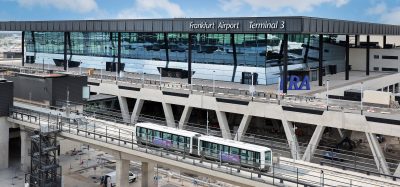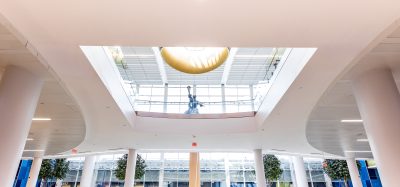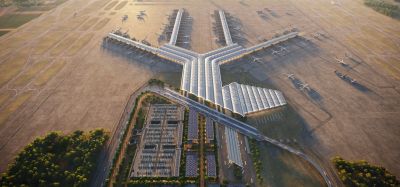A strategic approach to planning baggage systems
Posted: 3 April 2007 | Dave Tomber, Planning Program Manager, Seattle-Tacoma International | No comments yet
Baggage systems play a critically important part in airport operations. The visibility of baggage systems to executive management has only heightened with the implementation of federally mandated inline screening systems. Yet, baggage systems remain a headache for airports, airlines, and the Transportation Security Administration. More puzzling is the unfortunate reality that apparently similar terminals have varied success. Some may even question whether baggage system planning is more of a dark art than a robust process.
Baggage systems play a critically important part in airport operations. The visibility of baggage systems to executive management has only heightened with the implementation of federally mandated inline screening systems. Yet, baggage systems remain a headache for airports, airlines, and the Transportation Security Administration. More puzzling is the unfortunate reality that apparently similar terminals have varied success. Some may even question whether baggage system planning is more of a dark art than a robust process.
The reasons for these problems are varied, although the industry approach is often based on crude metrics and standardised solutions. Typical results include: higher costs, inappropriate use of technology and unnecessary system complexity; mismatches between capacity and demand; and impacts to capacity, operations, and passenger experience. In short, a wide range of solutions with varied success.
Value proposition
Clearly there is a need for a better analytical approach to planning baggage systems. Seattle-Tacoma International Airport, a division of the Port of Seattle, recognised this need. We have developed a structured approach that will deliver a more robust system and better operations.
Assumptions
The primary purpose of carefully defining objectives is to develop a useful planning basis that brackets a realistic range of potential future scenarios.
The first challenge in planning baggage systems is establishing a peak hour flow. There is a lot of talk about terminals in terms of million annual passengers, however, all baggage system designs are based on peak hour flows. In many cases, baggage system planning is based on a time period as short as 10 or 15 minutes. From peak hour flows at ticket lobby check-in, corresponding peak hour flows at baggage make-up can be determined. A not so obvious reality is that peak hour baggage flows at ticket lobby check-in and baggage make-up are not equal and can easily vary by 10 per cent or more. It is also important to understand the split by market sector and that peak hour is not flat because the flow rate is constantly changing.
Another challenge is translating capacity demand from peak hour flow to physical layout and equipment selection. At ticket lobby check-in, a simplistic approach is based on peak hour flow and processing rates at ticketing. This approach works in theory when ticketing is in full common use. In reality it is more complex when considering specific airline assignments in ticketing and differences in processing rates that typically results in a need for more positions. At baggage make-up, requirements for cart staging can vary widely depending on airline operation. For example, IATA (International Air Transport Association) guidelines recommend staging 3 carts per narrow body flight and 5-6 per wide body flight. In contrast, Alaska Airlines in Seattle stages 2-3 carts per narrow body, Jet Blue at New York JFK Airport stages 2 carts per narrow body flight, low cost carriers Ryanair and Easyjet in Liverpool stage 1 cart per narrow body flight, and long-haul carriers in Melbourne stage 9-10 carts per wide body flight to meet airline service levels.
Several of these critical assumptions include:
- Planning horizon
- Busy hour percentile of year
- Schedule for aircraft flights and cruise sailings
- Forecasted growth
- Special characteristics for international/domestic, business/leisure
- Passenger arrival profile
- Load factor
- Originating factor
- Bags per passenger
- Oversize bags
- Out-of-gauge bags
- Check-in split
- Check-in capacity
- Processing rates and protocols
- Staffing
- Closeout times at counter and baggage make-up
- Cart make-up staging
Static analysis
Assumptions make it possible to do a static, or spreadsheet, analysis. This step involves determining the total system-wide bag peak and split loads on individual feed lines in rolling 15 and 60 minutes increments of time. The results from this analysis form the basis for determining initial equipment requirements. A common mistake many planners and designers make at this point is to jump right into development of conceptual layouts for the baggage system before they have fully identified the problem that needs to be solved. A better approach is to develop process flow diagrams that illustrate the logic, controls, equipment, and loads through the baggage system
Conceptual layouts
With a process flow diagram in hand, which illustrates the problem that needs to be solved, baggage system planners and designers develop an initial conceptual layout that can subsequently be tested with a dynamic design simulation. Based on the results of the simulation, one or more adjustments are made until the system design meets the established criteria. Planning and design are iterative processes, and this effort will save time, money, and frustration down the road.
The difficulties with process flow complexity come from routing flexibility, load sharing on critical equipment, system redundancy, building constraints, and multiple upgrades and enhancements. Poorly designed systems result in downgraded performance, increased risk of jams and failure, more complex commissioning, and harder maintenance.
Dynamic analysis
Dynamic analysis includes both simulation and emulation. Detailed design simulation provides the ability to test system performance in a way that can not be determined through static spreadsheet analysis. System performance metrics are critical for understanding baggage systems and include time from ticket lobby check-in to baggage make-up, wait times, queue lengths, overflow conditions, and the number of bags missing flights. Bags missing flights are very costly to the airlines and industry estimates are as high as US$ 150 or more per bag. System performance also provides the ability to run operational scenarios, refine equipment needs, and develop criteria to refine layouts. Design simulation was used at Seattle-Tacoma International Airport to test and develop innovative strategies for increasing capacity while minimising capital investment. Many opportunities for increasing capacity without capital investment exist in most systems.
System emulation is a way to test and verify software control logic for complex baggage systems. Software control logic plays an important role in performance of baggage systems, arguably just as important, or even more so, than the physical layout and equipment. New baggage system software always contains errors, the issue is how many and when they are discovered.
Baggage system software control logic is viewed as proprietary intellectual property by suppliers. It is very likely that results from a detailed simulation, while valuable in the design stage, may bear no resemblance to actual performance. With system emulation, new control logic software can be tested early in the development process, before physical equipment has been assembled. Using a virtual 3D physical model of the baggage system developed during design simulation, the high- and low-level control logic can be tested with a laptop computer when it is simple and easy to correct errors.
System emulation minimises risk, provides quality assurance for software control logic, provides higher probability of start-up on schedule, increases certainty that a system will perform as intended, and provides visibility for proper functioning of baggage system. Where competitive bidding is required, Seattle-Tacoma International Airport recommends requiring contractor submittals for both simulation and emulation.
Control logic
Software control logic determines every aspect of how baggage moves and communicates in a complex electronic network. The control logic can be categorised into two types, high-level and low-level. High-level baggage controls, often called sort allocation control, determines basic system routing, time sensitive routing, load sharing on critical equipment, and multi-level baggage screening protocols. The sort allocation control can be described as the central brain, and communicates with other elements that are part of the high-level baggage controls, such as operator work stations, airport encoding units, manual encoding stations, and SCADA (supervisory control and data acquisition) systems.
Additionally, the sort allocation control communicates with several other systems, including low-level controls, flight information, and baggage information. Low-level baggage controls consist of PLCs (programmable logic controllers) that determine merge control, bag spacing, priority for placement conveyor lines, and acceleration/deceleration. Flight information systems include FIDS (flight information display), AODB (airport operational database), gate allocation, and check-in desk allocation. Baggage information systems include airline check-in, SITA bag source messages, CUTE (common use terminal equipment), CUSS (common use self-service), and BIDS (baggage information display).
Challenges of technology
The challenges of technology are complicated by the wide range of technical solutions available. Typically, there are a wide range of stakeholder opinions and the challenge lies in interpreting the benefit of different strategies. The real trade-offs are between functionality and performance, system resilience, initial capital cost, whole life cost, space requirements, and operational safety.
Understanding operational requirements leads to clear performance metrics and operational process targets. This in turn improves identification of technology options, evaluation of concepts, and development and validation of designs. The process is made more complicated with the diverse mix of stakeholders, the need to balance requirements for low cost versus legacy carriers, and regulatory mandates. The process needs to engage the wide range of stakeholders and provide a clear decision trail.
Peer airport assistance
So is baggage system planning a dark art or a robust process? Many people would argue the latter, particularly given the fact that baggage remains a headache for airlines and airports. With a structured approach similar to that used by Seattle-Tacoma International Airport it is possible ensure successful performance and relieve the anxiety of managers who are not interested in details, only that their baggage systems will work as intended. If you have any questions, please do not hesitate to contact us. We welcome the opportunity to consult and share information with peer airports.
Join our free webinar: Transforming Airport Security – Innovation, Impact, and the Passenger Experience
The landscape of airport security is undergoing a profound transformation, driven by evolving threats, technology, and passenger expectations. This webinar focuses on how AtkinsRéalis has been transforming security processes at some of the world’s busiest airports with smarter, more adaptive solutions.
Date: 4 Nov | Time: 14:00 GMT
REGISTER NOW TO SECURE YOUR SPOT
Can’t attend live? No worries – register to receive the recording post-event.
Issue
Related topics
Augmented reality (AR)/ Virtual reality (VR), Baggage handling


















